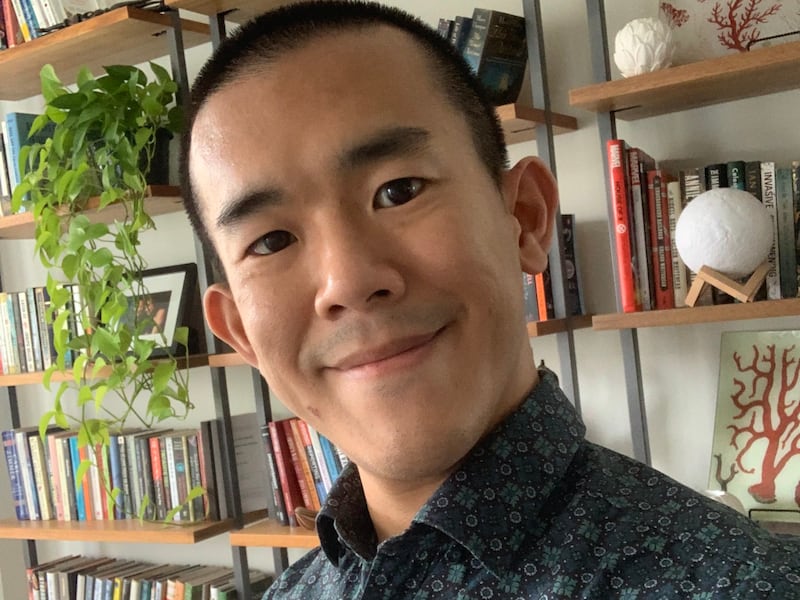He’s sweating and pacing, from the kitchen to the sofa to the dining room table, everywhere he sits to work. With his magnum opus about to go online, he’s “a physiological wreck, and a nervous wreck.” In his mind, he rehashes every detail, hoping he hasn’t made any mistakes.
Ed Yong spent 10 days interviewing experts, writing, editing, writing more, trimming, clarifying and verifying, for 14 hours a day. Now, on a Wednesday afternoon in March, two weeks into the pandemic shutdown, The Atlantic is about to publish his tour de force, a crisp, 5,473-word piece of journalism called “How the Pandemic Will End.” All he can do is wait.
Ed studied science in college, from animal behavior to molecular biology. He started a Ph.D. program, thinking he’d become a researcher. “I realized I was actually very bad at that,” he explains. But he was good at digesting science and explaining it to laypeople, so he started writing. First on a blog, then as a freelancer for National Geographic, the New Yorker and Scientific American, then as the first staff science writer at The Atlantic. In all, the 38-year-old has been at it for 14 years.
He’s written about dragon dissections, brain-training games and Bao Bao the panda. He wrote a New York Times bestseller — “I Contain Multitudes” — about microbes and their interaction with the visible world, and gave a TED Talk titled “Zombie roaches and other parasite tales.”
He was on leave writing a second book — about how animals perceive the world — when the coronavirus emerged. His editor asked him to come back, and Ed didn’t need to be asked twice. His mission: “swing big.”
Ed scratches his scalp through buzzed black hair as his dark eyes peer at a screen. No updates. He never hoped to write this story, though it’s not his first in this vein. In 2018, he wrote a long-form piece questioning whether America was ready for a pandemic. In 2016, he wrote about how president-elect Trump might handle a pandemic. “I sort of feel —” he pauses. “Ready?
“I’m not sure anyone can be ready for a global pandemic,” he says, “but I feel ready to do the best job that I can do, and I hope the work makes a difference.”
But this story is a little different. America is descending into uncharted territory. The story is predictive, which makes it all the more nerve-wracking. Whether he’s writing about viruses or giraffes, he always worries about getting the science right, and being helpful. “And all those anxieties,” he says, “are super magnified now, given how high the stakes are.”
His first coronavirus story appeared on Jan. 28. He wrote three more before the big one, where he uses rigorous reporting to offer a roadmap for how the virus could play out in the U.S. under different scenarios.
The story comes online, and now he waits to see how the world reacts. He doesn’t have to wait long.
Traffic surges, culminating when President Obama tweets the story. “Our site stats just went nuts,” Ed says later. He exhales. No experts called him out, and the story remains correction-free. Within days, it becomes one of the site’s most-read stories ever.
The nerves cede ground to something new: “Just a very intense feeling of purpose,” he says. Because his reporting can help people make sense of the complicated, and lead to more informed decisions. Which is why what he values most isn’t any “influencer” tweeting that story. He remembers the thousand or so emails he received from readers around the world, largely telling him they felt braver and less anxious.
Like, for the first time, they actually understood what was happening.


